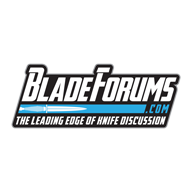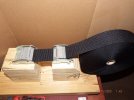gamma_nyc
Gold Member
- Joined
- Dec 1, 2007
- Messages
- 706
Hi,
Is there an easy way to remove burrs from a knife edge? I find that when I sharpen on a stone or sharpmaker, the burr is formed and then when I try to remove by switching sides the burr just flips over. I end up switching back and forth 20+ times to try and deburr.
I’ve tried a metal rod and leather strop. These make it easier by at least 50%.
Are there any other secrets?
Bonus question - what do you recommend if I have a thick burr that is almost as thick as the edge?
Is there an easy way to remove burrs from a knife edge? I find that when I sharpen on a stone or sharpmaker, the burr is formed and then when I try to remove by switching sides the burr just flips over. I end up switching back and forth 20+ times to try and deburr.
I’ve tried a metal rod and leather strop. These make it easier by at least 50%.
Are there any other secrets?
Bonus question - what do you recommend if I have a thick burr that is almost as thick as the edge?


